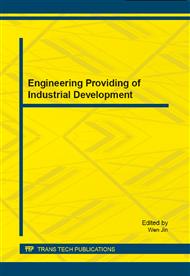p.183
p.190
p.196
p.201
p.208
p.213
p.218
p.224
p.228
A Novel Flow Regime Identification Based on PCA Feature Extraction and ELM Networks in ERT System
Abstract:
Two-phase flow exists widely in industrial production process. On-line intelligent identification of flow parameters plays an increasingly important role in the industrial production safety. Among flow parameters, the identification of flow regimes is especially important and valuable for industrial processes control. To satisfy the on-line identification, it is necessary to reduce time consuming in training and recognition phase. In the paper, the parameters measurements are implemented in Electrical resistance tomography (ERT), which is a process tomography technology based on electrical resistance sensing mechanism. A new identification method is proposed using PCA feature extraction and Extreme learning neural networks. Simulation was carried out for typical flow regimes core flow, laminar flow, circulation flow and trickle flow. The results show its feasibility. In order to prove its advantage in improving speed, running time using back propagation and support vector machine algorithms are compared with extreme learning machine. The experiments results indicate that this method significant reduces time consuming in training phase.
Info:
Periodical:
Pages:
208-212
Citation:
Online since:
September 2014
Authors:
Price:
Сopyright:
© 2014 Trans Tech Publications Ltd. All Rights Reserved
Share:
Citation:


